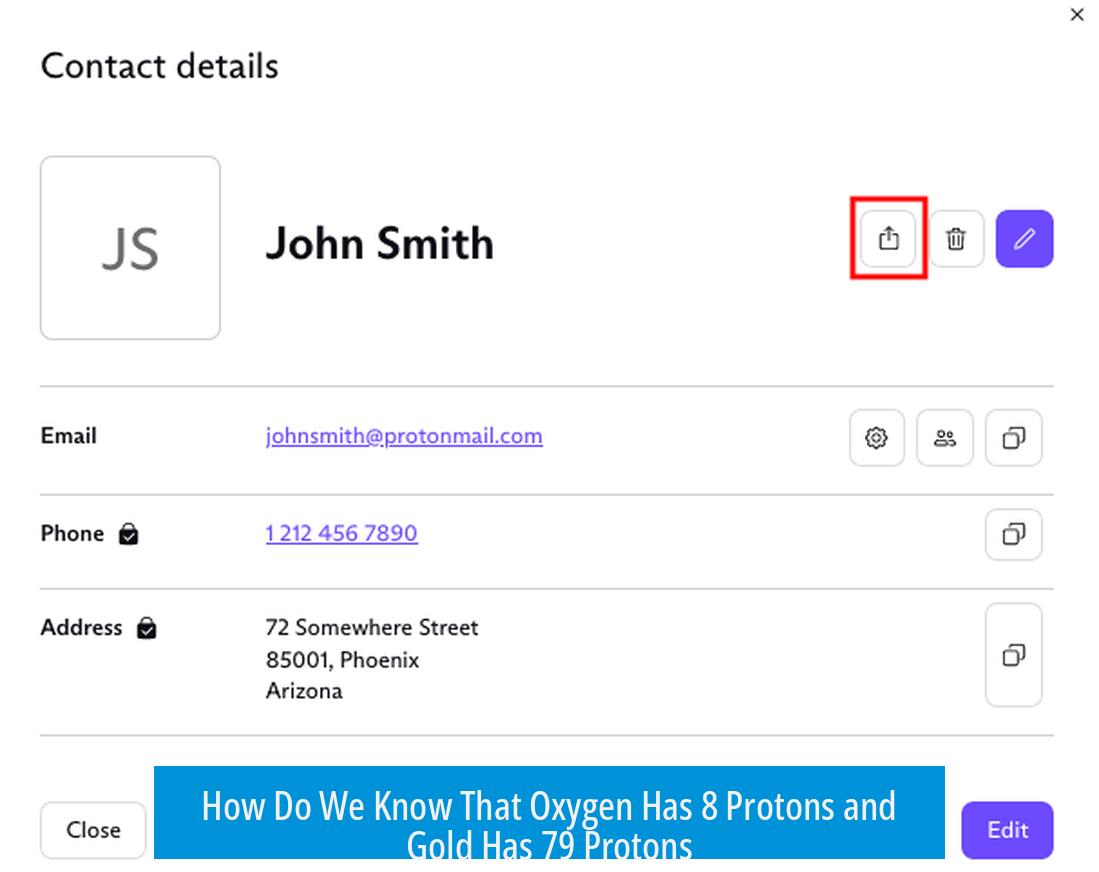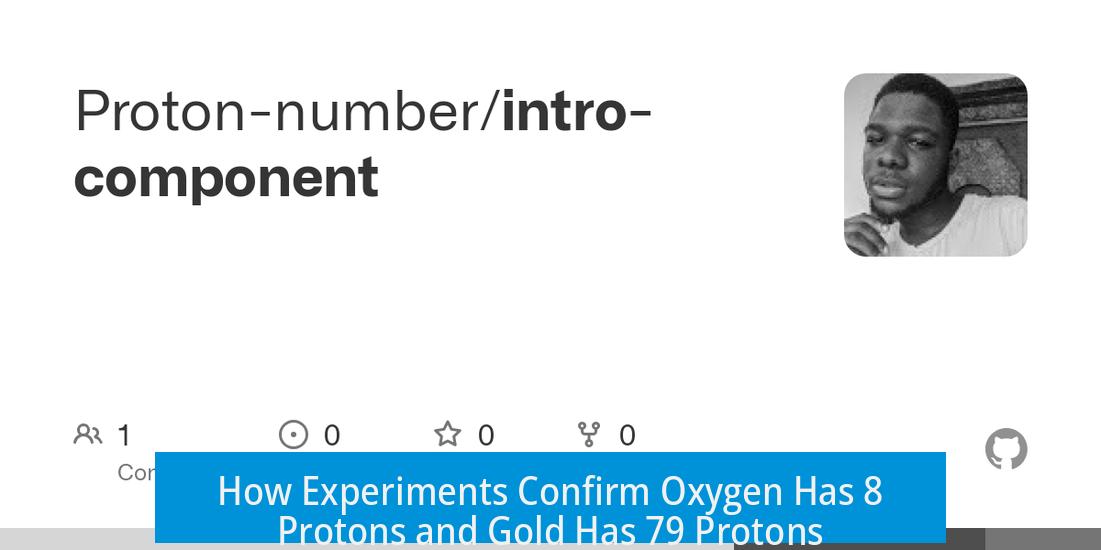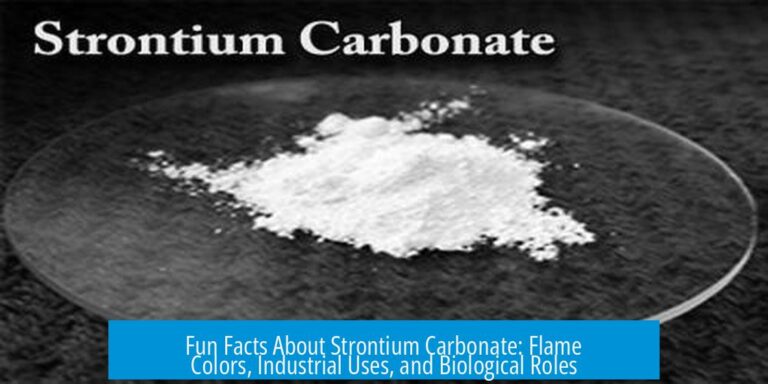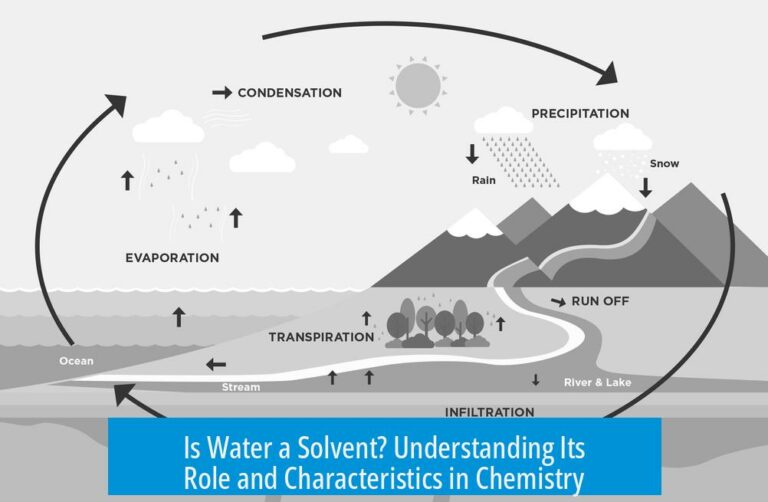How Do We Know That Oxygen Has 8 Protons and Gold Has 79 Protons?

The knowledge that oxygen has 8 protons, gold has 79, and other elements have specific numbers of protons comes from a long history of experimental work, particularly the definitive X-ray spectroscopy experiments of Henry Moseley, combined with foundational chemical and physical studies.
The Development of the Atomic Model Through Evidence
The atomic model is not the result of a single experiment. It developed progressively over time through numerous experiments that consistently supported its predictions. Early chemists and physicists gathered experimental data that gradually led to the concept of atoms composed of subatomic particles arranged in specific structures.
Modern techniques, such as atomic mass spectrometry, offer precise and direct measurements of atomic properties, confirming these foundational conclusions. However, the key breakthroughs date back to earlier centuries.
Mendeleev’s Periodic Table and Atomic Numbers
Dmitri Mendeleev’s work in the 19th century laid a conceptual foundation. He organized known elements by increasing atomic weight on his periodic table. Despite not knowing about protons or neutrons, he noticed anomalies.
For example, tellurium has a higher atomic weight than iodine but chemically aligns with elements like sulfur and selenium. Mendeleev chose to order these elements by chemical behavior rather than weight, effectively placing iodine before tellurium.
This reordering unintentionally matched the increasing number of protons in these elements, though Mendeleev was unaware of the subatomic basis. His periodic table was the first to arrange elements by a property later recognized as atomic number (Z), the count of protons within the nucleus.
Moseley’s X-Ray Spectroscopy: Definitive Proof
The experimental breakthrough linking atomic number to proton count came from Henry Moseley’s work in the early 20th century.
Moseley studied the X-ray spectra emitted from elements when bombarded by high-energy radiation. Specifically, he focused on the characteristic X-rays produced when core electrons were ejected. Outer electrons fall into these vacancies, releasing X-rays whose frequencies depended on nuclear charge.
Moseley discovered a direct mathematical relationship between the square root of the frequency of the emitted X-rays and an integer corresponding precisely to the element’s position in the periodic table. This integer is the atomic number, equal to the number of protons in the nucleus.
This relationship is encapsulated in Moseley’s law, providing irrefutable experimental evidence that atomic number is a physical quantity directly linked to proton count.
Mass Spectrometry Supports Proton Numbers

Mass spectrometry helps measure atomic masses with high precision. By ionizing atoms and measuring their mass-to-charge ratio, scientists can determine that atomic masses often approximate integer multiples of protons and neutrons combined.
Repeated analysis across isotopes shows that differences in mass relate to added neutrons, while the consistent ‘base’ mass corresponds to the proton count. Thus, while mass spectrometry primarily measures mass rather than charge, it confirms that elements differ by discrete building blocks.
This contributes to understanding each element’s identity, supporting that each step in atomic number corresponds to adding one proton.
Foundations in Early Chemistry and Particle Physics
Before Moseley, other foundational experiments shaped the atomic model. Stoichiometry, the study of element proportions in compounds, suggested discrete units of elements. The consistent ratios indicated atoms combined in fixed numbers.
Studies of charged particle behavior in magnetic and electric fields (e.g., cathode ray tube experiments) identified electrons and hinted at internal atomic structure. Ernest Rutherford’s gold foil experiment showed that atoms have dense positively charged nuclei.
Together, these results helped scientists imagine atoms as having positive nuclei with electrons orbiting, and eventually led to the hypothesis that the number of positive charges (protons) determined element identity.
Summary of Experiments and Conclusions
- Mendeleev’s periodic table: Introduced the concept of ordering elements by a property corresponding to proton count without knowing protons.
- Moseley’s X-ray spectroscopy: Provided direct experimental proof linking element’s atomic number to the number of protons.
- Mass spectrometry: Measures atomic masses, reaffirming elements vary by integral numbers of basic units, supporting proton count concepts.
- Rutherford’s atomic model and particle behavior: Laid groundwork for subatomic structure and the role of protons.
Key Takeaways
- Atomic number equals the number of protons and defines each element’s identity.
- Moseley’s experiments provided the first direct measurement linking atomic number to proton count.
- Mendeleev’s periodic table implicitly reflected proton order through chemical properties.
- Mass spectrometry offers precise atomic mass data supporting the existence of discrete protons.
- Early atomic models and charged particle studies contributed essential insights leading to the modern understanding.
How Do We Know That Oxygen Has 8 Protons, Gold Has 79 Protons, and More? The Experiments That Revealed Atomic Numbers
We know oxygen has 8 protons and gold has 79 protons thanks to a combination of groundbreaking experiments spanning more than a century. This wasn’t a simple “Aha!” moment from a single test but a story built from many clues—each experiment adding pieces to the atomic puzzle until a clear picture emerged.
How did scientists arrive at these proton numbers? Buckle up for a journey through classic chemistry, clever X-ray experiments, and cutting-edge tools that all contributed to one of science’s most fundamental truths: each element is uniquely defined by its proton count.
From Mendeleev’s Table Mysteries to Atomic Numbers
Back in 1869, Dmitri Mendeleev was busy organizing the known chemical elements. He didn’t know about protons or neutrons yet (nucleons were still decades away from discovery). His approach? Arranging elements by increasing atomic weight. But wait—some elements didn’t fit the pattern.
Take tellurium and iodine. Tellurium is actually heavier than iodine, so by simple weight order, it should come after iodine. Yet Mendeleev noticed iodine belonged with the halogens, while tellurium aligned with sulfur and selenium. So, he swapped their positions.
Turns out, he had accidentally arranged elements by increasing number of protons—the true atomic number (Z)—long before anyone identified them. This insight showed there was a deeper order beneath atomic weights, though Mendeleev didn’t know why at the time.
Moseley’s X-ray Experiments: Counting Protons By Their Glow
Fast forward to the early 1900s. Physicist Henry Moseley performed elegant experiments using X-rays that brought solid proof. His idea was simple: shoot X-rays at atoms and eject inner shell electrons. Then watch outer electrons drop down to fill the vacancy—like a game of atomic musical chairs.
Each drop emits another X-ray at a very specific energy or frequency. Moseley discovered that this frequency directly correlates with the atomic number, which corresponds to the number of protons in the nucleus.
This wasn’t guesswork. It was mathematical confirmation connecting X-ray energy levels to proton count. Moseley’s work gave the periodic table a solid physical footing and eliminated any ambiguity left by atomic weights.
| Element | Atomic Number (Z) | Proton Count |
|---|---|---|
| Oxygen | 8 | 8 protons |
| Gold | 79 | 79 protons |
Mass Spectrometry: Weighing Atoms to Confirm Their Identity
Imagine having a scaled balance sensitive enough to weigh single atoms. That’s what mass spectrometry achieves. It ionizes atoms and measures their mass-to-charge ratio with staggering precision.
Early mass spectrometry experiments showed that atomic masses fall close to whole numbers—integers—like counting discrete building blocks rather than random weights. This suggested atoms grow heavier in quantized steps, each step representing one more proton added to the nucleus.
By analyzing multiple samples of elements, scientists realized that these integer mass values matched the proton count deduced from other experiments, strengthening the case that protons define each element’s identity.
The Foundations: Stoichiometry and Particle Physics
Before X-rays and spectrometers, chemists used stoichiometry—the calculation of chemical formulas and proportions—to infer atomic masses and relationships between elements. These ratios hinted at atoms combining in fixed patterns indicating they had definite, countable parts.
Simultaneously, experiments with charged particles moving through magnetic fields helped reveal the properties of electrons and protons. Ernest Rutherford’s gold foil experiment famously showed that atoms have tiny, dense nuclei—the home of protons.
Piecing together atomic models based on these observations led scientists to theorize that the positive charge number in the nucleus matched element properties. This was a powerful insight into the proton’s role.
Why Proton Number, Not Atomic Weight?
Good question! Atomic weight can vary due to isotopes—atoms of the same element with different neutron counts. For example, oxygen-16, oxygen-17, and oxygen-18 all have 8 protons but differ in neutron number. This changes mass but not chemical behavior.
In contrast, the proton count defines elemental identity. If you add or remove protons, you get a different element entirely—gold wouldn’t be gold with 78 or 80 protons.
Modern Confirmations and Technologies
Today, atomic number determination achieves incredible precision with instruments like accelerator mass spectrometers and advanced X-ray crystallography. These tools verify the proton counts Moseley and predecessors proposed over a century ago.
Atomic mass spectrometry remains a key technique for practical and theoretical work—including carbon dating and trace element analysis.
Final Thoughts: Science’s Atomic Symphony
So, how do we know oxygen has 8 protons and gold 79? Because science played a long, careful symphony of experiments:
- Mendeleev’s intuitive periodic table hinted at underlying order.
- Moseley’s X-ray experiments nailed atomic numbers to observed physical phenomena.
- Mass spectrometry gave precise atomic mass data supporting proton-based identity.
- Early chemistry and physics experiments built the atomic models where protons took center stage.
Each step added confidence and clarity. Science didn’t just guess halfway through for fun—it built a robust, tested framework that holds up wonderfully even now.
Do you ever wonder how many protons your coffee cup hold? Probably none, but the atoms inside do, and thanks to these scientists, we know exactly how many. Science rocks—literally, up to gold’s 79 protons!
How did Moseley’s X-ray experiments prove the number of protons in an element?
Moseley fired X-rays at elements, knocking out core electrons. When other electrons filled these gaps, they emitted X-rays with specific energies. These energies correlated mathematically to atomic number, directly linking it to proton count.
Why was Mendeleev’s periodic table important before the discovery of protons?
Mendeleev arranged elements by increasing atomic mass but noticed inconsistencies, like tellurium and iodine. He reordered them logically, effectively ordering elements by increasing proton number without knowing about protons.
How does mass spectrometry support the idea of elements having distinct proton numbers?
Mass spectrometry measures atomic masses precisely. It shows atomic mass in near-integer steps, implying each element differs by a discrete unit, which corresponds to one proton difference between elements.
What role did early chemistry and physics experiments play in identifying proton numbers?
Early stoichiometry helped calculate atomic masses. Experiments studying charged particles in magnetic fields and Rutherford’s atomic model laid the foundation for understanding atomic structure and proton numbers.
Is the proton count of an element still confirmed by modern experiments?
Yes, modern techniques like advanced mass spectrometry and X-ray spectroscopy continue to confirm each element’s proton count precisely. These methods validate and refine earlier results.





Leave a Comment